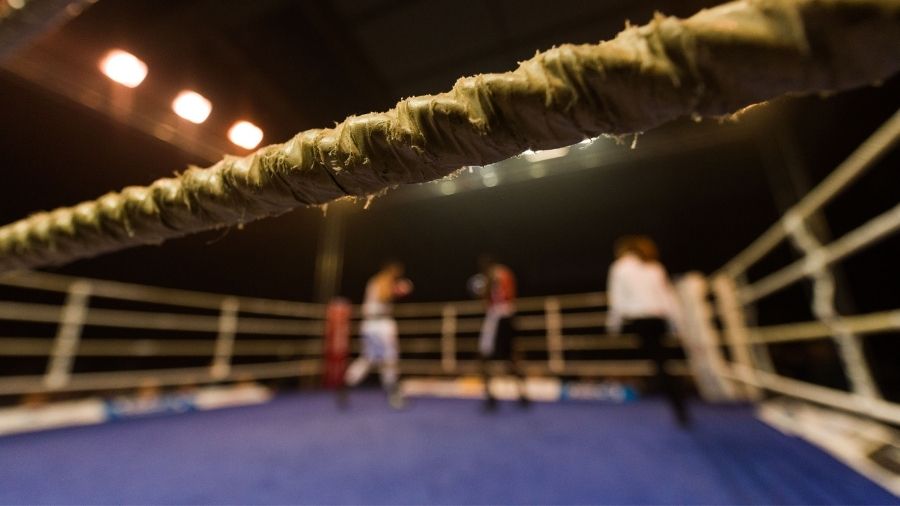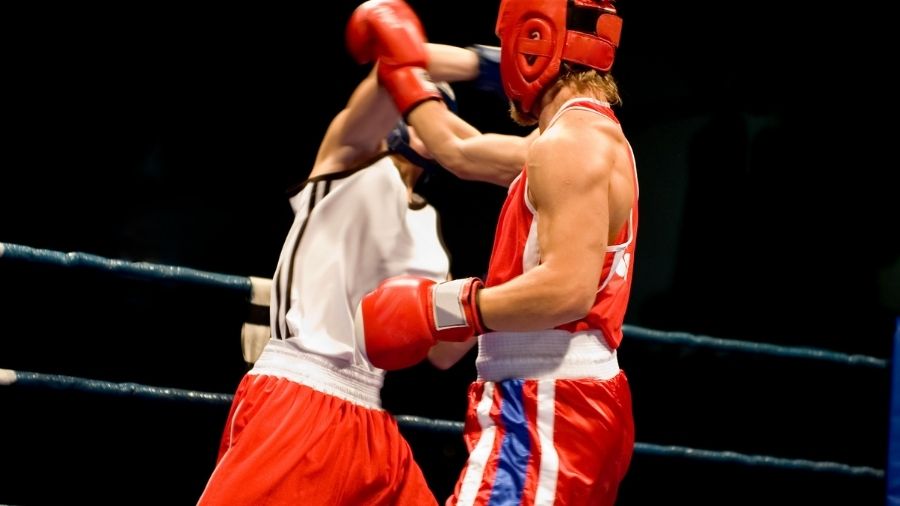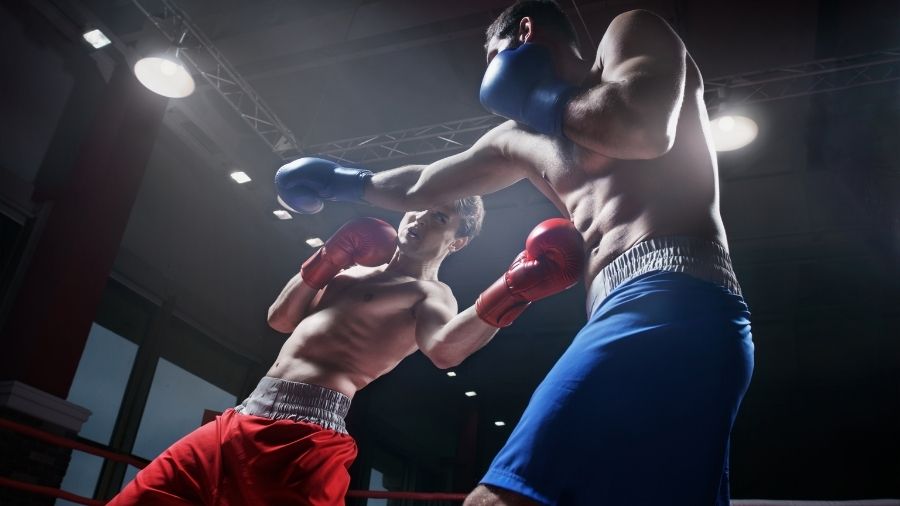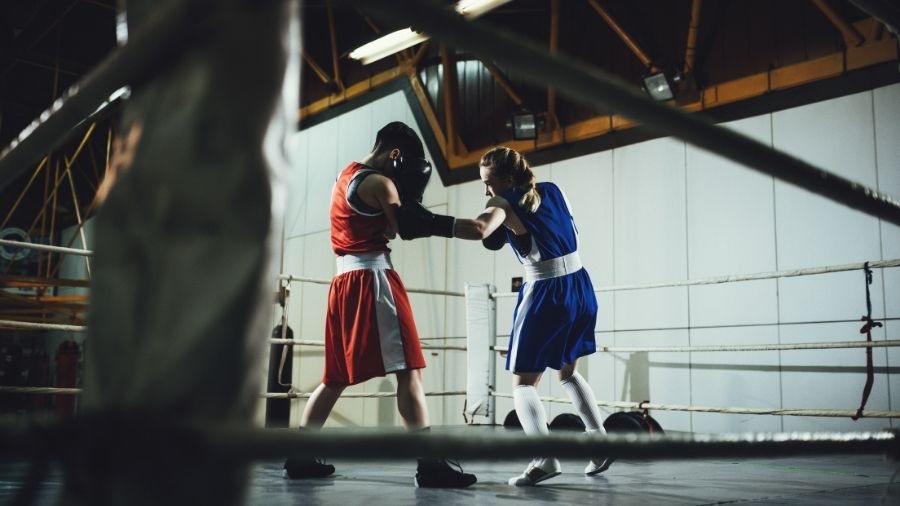In layman’s eyes, boxing may look simple as you only need to learn how to use your hands as weapons, right? But at the same time, we can often hear experts referring to boxing using the term “Sweet Science.” If fighting in the ring is that simple, how on earth can there be science involved?
“Sweet Science” is a term used to describe very technical and strategic boxers inside the ring. These fighters do not rely just on power and aggression but on their minds and well-calculated game plan.
They are patient, always reading the opponent, looking for holes, and making changes in the middle of the fight. From the way they move, create angles, and react when they land punches, these boxers are often superior in every aspect of the game.
Keep reading this article to find out more about the term Sweet Science. We will explore where it came from, what it means in more detail, and give good examples.
Why Is Boxing Called The Sweet Science?
Although it looks simple, boxing is a complex sport involving an element of science. In a chaotic world of fist fighting where many fighters rely on aggression, bravery, power, and a strong chin, the sweet science goes above that.
Discover The Little Known Secrets For Unlocking Devastating KO Power!
Heavy hands are built doing these things...
The term sweet science stands for a boxer who can stay composed and strategic and finish the fight without taking significant damage. On fight night, they look calm and in control, which allows them to read the opponent, get data, develop a plan, and beat them effectively.
They can always find that ideal balance, adapt to what the opponent is doing, calculate every move and always beat them to the punch. And bear in mind that they have to do this in the middle of the fight, with 20,000+ people roaring in the arena and millions of watching at home. It takes a unique mindset, intelligence, and guts to do this.
And like real science, boxing is constantly changing and evolving. There is no specific method you should follow to succeed, and it has been like that since ancient times. Fighters and coaches always have to search for new skills, strategies of training, nutrition and diet plans, game plans, techniques, and many other things. When you look at the big picture, boxing and fighting, in general, is real science.
Where Did The Term “Sweet Science” Come From?

The origins of the term “Sweet Science” go back to the 19th century. Back in those days, the sport of boxing started to evolve and change at a high rate, with fighters coming to be more technical and strategic inside the ring.
Being violent and super aggressive wasn’t a thing any longer, and a man who spotted this change was the sports journalist Pierce Egan. He used the term “science” to describe boxing as a sport where fighters use tactics and strategies to win a match.
This may sound wrong because, when you think about 19th-century boxing, most people think about bare-knuckle slugfests and beating each other to death. Yet, this couldn’t be further from the truth because, at the time, boxing was already advanced.
Fighters used techniques like footwork, dodging and slipping punches, and various other techniques and skills present in modern-day boxing.
One of the first boxers who showed the world how tactical wins fights was the legend, Daniel Mendoza. In the late 1700s, Mendoza was a fighter with a unique set of skills for that time.
He used footwork to create angles, dodge strikes to deliver precise counters, and was often two steps ahead of his opponents. In some way, he set an outline for what would later become known as the “Sweet Science” of boxing.
Sweet Science In Modern Times
Pierce Egan was the first person to use “Sweet Science” to describe boxing back in 1813. But at the time, this term wasn’t popular at all. It was used much less than in modern times. But why? How the term Sweet Science has come to be so popular in boxing?
It all started in 1956 when the famous journalist A.J. Liebling published “The Sweet Science.” Liebling used to work with “The New Yorker,” and he wrote a book that consists of only the most iconic moments in boxing history.
The book exploded, and in some way, it changed the way we see boxing as a sport. Like a true professional, Liebling credited Egan for being the first one to use this term.
The book itself provides a unique look into the most famous fights in boxing history. Liebling writes about different styles, intelligence, talent and also covers the mental aspect of boxing.
Even today, this book is a classic every boxing fan has to have on their shelf. If that is not enough for you to buy it, “Sports Illustrated” ranked “The Sweet Science” in the number 1 place of the greatest sports books of all time.
Where Did The Term “Boxing” Come From (A Brief History)?

Back in ancient times, boxing used to be called “pugilism,” a term that comes from the word “pugil,” which means “a boxer.” Next, the term “Pugil” is derived from the Latin word “fungus,” which means the “fist,” and “pyx,” which means “clenched fist.” The other term people used to describe boxing was “prizefighting,” which refers to fighting for money and fame.
The earliest boxing records go back to the ancient Near East in the 3rd and 2nd millennia BC. In modern-day Iraq, archeologists have found a lot of cave drawings showing people fighting with their hands being wrapped. The first-ever evidence of a fistfight where both parties wore gloves was in Minoan Crete around 1500–1400 BC.
However, the first set of rules got put together in Ancient Greece, where boxing became a real sport.
Modern-day boxing emerged in Great Britain with the birth of the famous “Queensberry Rules” in 1867. The man who put together this set of rules was John Chambers. The Welsh sportsman codified 12 rules that would change the sport of boxing forever:
- All boxers must wear padded boxing gloves
- Matches must take place in a square ring
- Each round is 3 minutes, and there is a 1 min rest between the rounds
- 10-second count
The Best Examples Of The Sweet Science In Modern Boxing
The term “sweet science” is more than present in modern boxing. In this day and age, just about every boxer has to be strategic and use tactics inside the ring. It doesn’t even matter if they are the most violent brawlers; they need a bit of science in their game to succeed.
You can’t survive or expect to go far in boxing without being strategic, no matter how gifted you are. Here are some fighters whose fighting style is an excellent example of what sweet science means.
- Muhammad Ali — often seen as the greatest boxer of all time and perhaps the ideal example of the sweet science. First, he would use mental tactics to bully his opponents and make them angry. He would utilize footwork and head movement to perfection on fight night to avoid shots and deliver fast and precise counters. In most cases, he would drag his opponents into the deep waters, tire them out, and finish with precise combos.
- Floyd Mayweather — is, without a doubt, the best defensive boxer of all times. Each step he makes and punches he throws is well calculated inside the ring. He would spend the opening rounds being patient and like a computer, gathering data and analyzing his opponents. Once he sees all the holes, tendencies, and weaknesses, he would start attacking from all angles, mixing his punches high and low all the time.
Is The Term “Science” An Overstatement?

No, boxing is a very complex combat sport, and saying that it is a science and art is spot on. Don’t make a mistake about it; boxing is not rocket science. But at the same time, there are so many factors and variables that contribute to whether you are going to make it.
First of all, boxers need to spend around five years in a gym working hard before starting competing. Next, they must fight in amateur matches a couple of years before turning pro.
Once in a fight camp, boxers need to develop the proper nutrition and training plan to achieve optimal results. They use various tools to measure and analyze data, avoid overtraining, and get the body in top shape.
On top of that, they must analyze their opponent with the coaches and develop A, B, and C plans. Then, they must find the right sparring partners, drill those plans, and develop automatic reactions.
Like that’s not complex and stressful enough, they work with the media for months, trash talk, and do various other things to promote the fight. And on fight night, they must perform under pressure, be fearless, stay composed and strategic, and win.
What Are The Different Boxing Styles?
Each fighter has a unique set of skills that makes them better or worse than other fighters. The best boxers are the ones who are good at one specific style but can also mix it with different styles and be well-rounded. In general, each boxer falls into one of the following four boxing styles. You can look at these four styles as four different ranges:
- Outside fighter — A boxer who prefers to fight at a distance and avoid close-range brawls fights outside. They use long-range punches to keep their range and are on the move all the time. These fighters are usually the ones who are more strategic and associated with the term “Sweet Science,” like Muhammad Ali.
- Inside fighter —A boxer who prefers to keep his ground and fight at a close distance fights on the inside.
They are usually very technical, less mobile than outside boxers, but throw a lot of power punches. As the fight progresses, they would overwhelm their opponent with high volume and precision before knocking them out. One such fighter is the boxing world champ, Canelo Alvarez. - Brawler — A boxer who prefers to fight inside the pocket, exchange hard punches, and finish the fight as fast as possible likes to brawl. They usually do not care much about the gas tank, are very aggressive, and are less technical than most outside and inside boxers. But they make up for the lack of footwork and technique with sheer power, bravery, and strong chin.
- Swarmer — Moving forward, heavy pressure and non-stop aggression swarms the opponent. These boxers are usually the short who would swing wild hooks and uppercuts to close the range and initiate a brawl. They also tend to absorb a lot of damage because fighting this way leaves you open for counterattacks.
Frequently Asked Questions About Boxing

Does Boxing Build Muscles?
Boxing is not a physical activity that builds big muscles, the ones you can develop by lifting weights in the gym. It is a full-body workout that activates the muscles in your back, shoulders, hips, and entire core.
But no matter if you spar, hit the heavy bag, or shadowbox, these activities do not provide adequate muscular tension or metabolic stress needed to build muscles. To develop muscle mass, muscles need resistance, like lifting weights.
Most boxers build muscles through strength training, a crucial part of their training regime. Some boxers do bodyweight exercises like push-ups and pull-ups, while others might go to the gym and lift weights.
Is Boxing Good For MMA?
Yes, boxing is great for MMA, and there have been many great UFC fighters and champions who had a strong base in boxing. Yes, MMA is a sport where fighters need to know how to strike with all limbs, grapple, and fight on the ground.
But not a single martial art besides boxing would teach you better footwork, defense and head movement, and how to throw punches. In most cases, these are the skills that separate great fighters from the average ones.
Just look at Conor McGregor, Petr Yan, or Max Holloway if you need any proof. These three fighters have built their careers on footwork, fast and precise punching combos, and solid defense.
Is Boxing Better Than Kickboxing?
Overall, boxing is not better than kickboxing in most aspects, mainly because it is less versatile. Kickboxers use punches, kicks, and elbows, and knees to strike and do damage. On the other hand, boxing is limited because it includes only punches.
This means that kickboxing is a better option for people who want to learn self-defense, for instance. It trains you to use all limbs as weapons to fight at all ranges, far more than boxing. Whether it’s a fight in the room, bar, or open space, you would have a lot more weapons at your disposal.
And as far as fighting on the street is concerned, the one that has more and better weapons is the one who wins the fight in most cases. This doesn’t mean that boxing is bad by any means, but it is not better than kickboxing.
When it comes to fitness, losing weight, and getting in top shape, it’s fair to say that both arts are equal in these aspects. Training in both arts is a full-body workout that will activate all the muscles in your body and help burn many calories.


